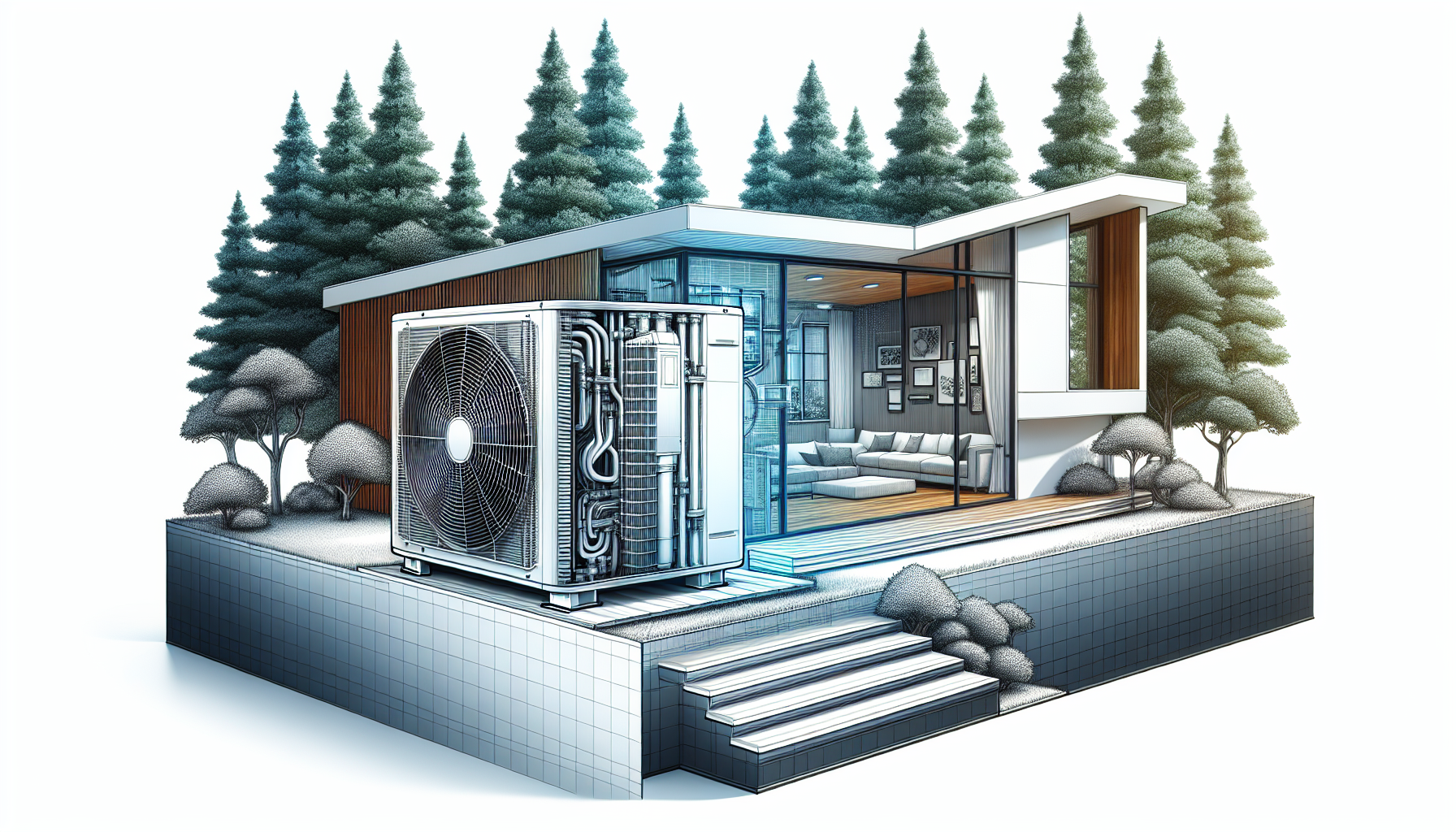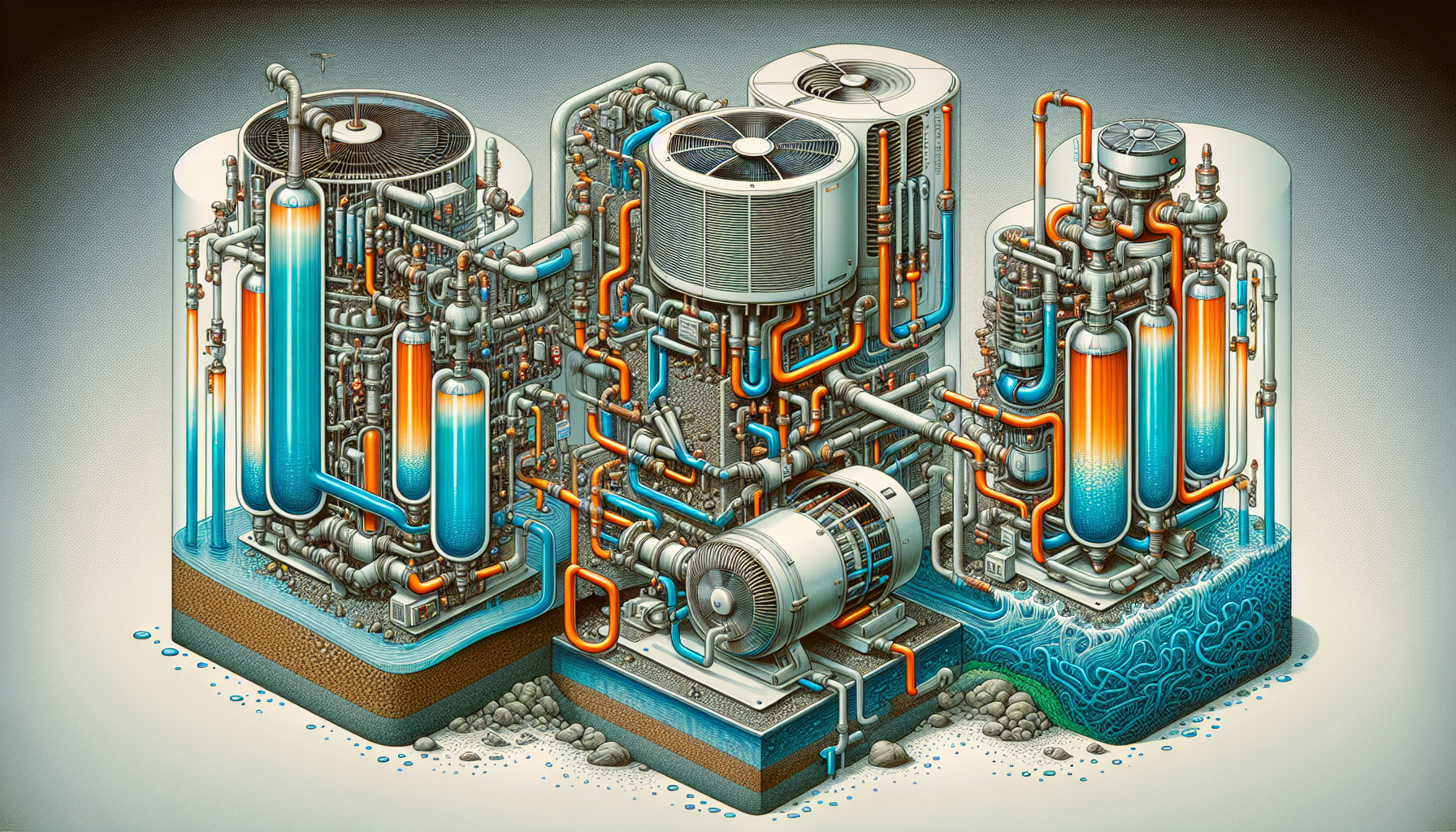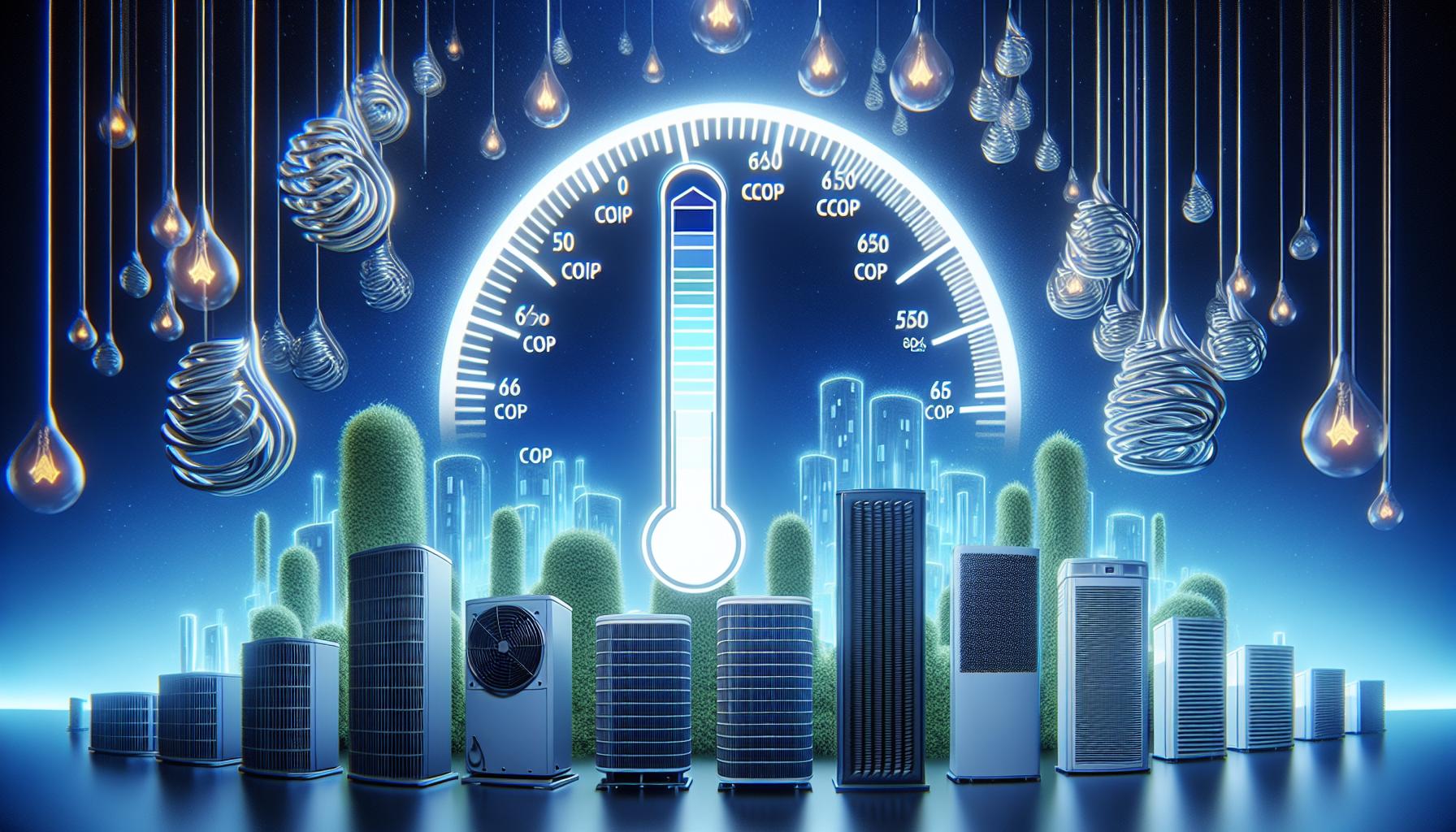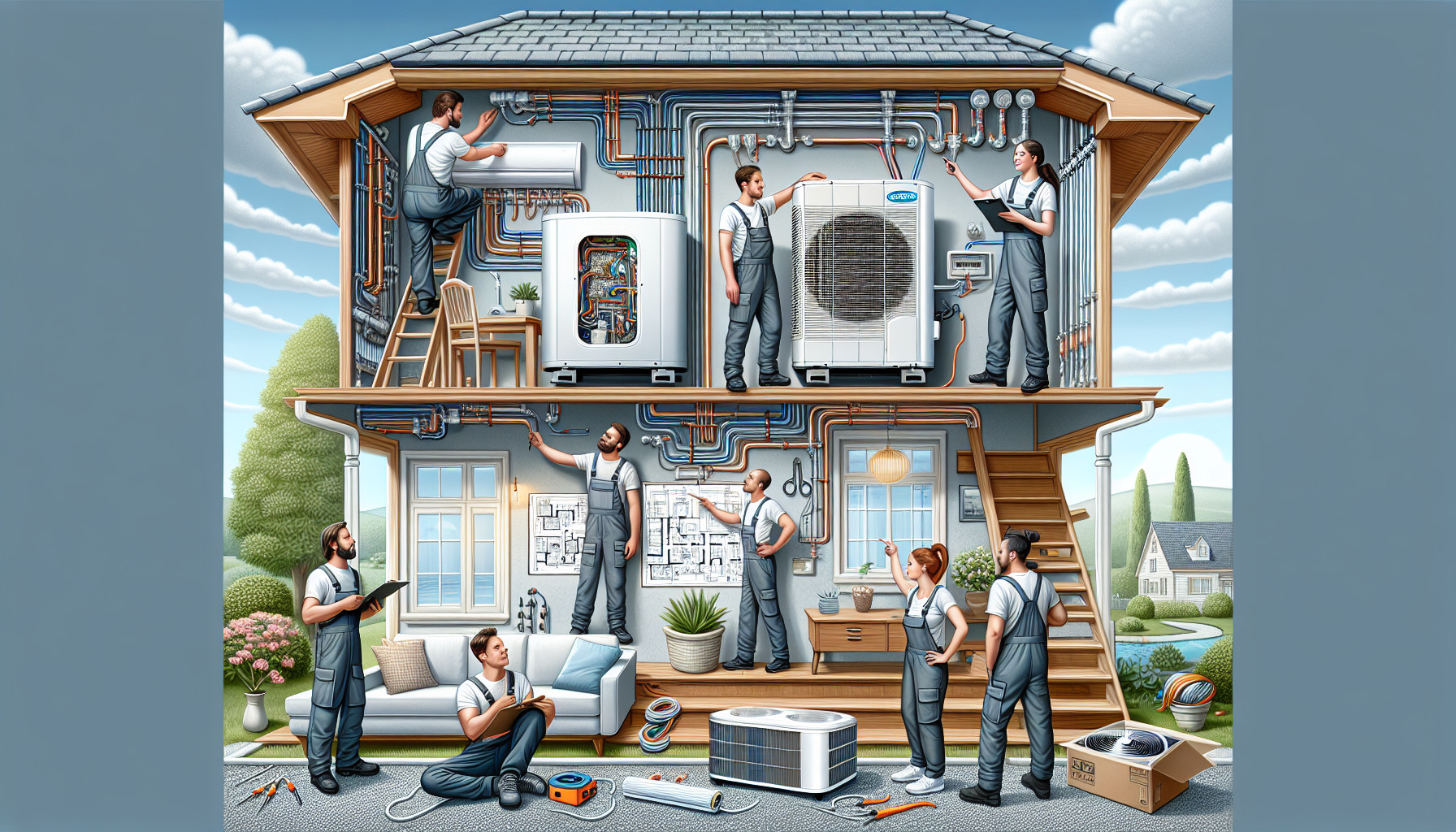Your Essential Checklist: How to Choose the Right Heat Pump for Your Home
When it comes to home comfort, selecting the right heat pump is a critical decision with long-term implications. If you’re wondering how to choose the right heat pump for your home, it’s essential to consider factors like your local climate, the size and insulation level of your property, efficiency ratings, and your budget. This article provides clear, step-by-step guidance to help you make an informed choice, ensuring that your heating and cooling needs are met with maximum efficiency and minimum costs.
Key Takeaways
-
Properly sizing and selecting a heat pump requires understanding your specific needs, taking into account climate, home layout, and lifestyle to ensure efficiency and comfort.
-
Heat pump technologies come in various forms such as air source, ground source, and water source, each with unique benefits and suitability; efficiency is measured by Coefficient of Performance (COP) and Seasonal Coefficient of Performance (SCOP).
-
Heat pump installation is a significant investment with a range of costs and requires professional assessment; maintenance is crucial for system longevity, with energy efficiency and reduced operational costs realized over time.
Understanding Your Heat Pump Needs

Your home is your sanctuary, and ensuring it remains comfortable regardless of the season is paramount. But how do you begin to determine the size and type of heat pump that will best meet your unique heating and cooling needs? Let’s start by considering the climate you live in; it’s a significant player in the type of heat pump system that will be most effective for you. Whether you’re battling brisk winters or enduring sweltering summers, there’s a heat pump out there tailored for your environment.
Now, think about the size of your space. Just as a tailored suit fits better than one off the rack, a heat pump system that’s the right size for your home will perform more efficiently. But it’s not just about square footage. The amount of sunlight your home receives also swings the pendulum of your heating and cooling needs. Homes bathed in sunlight need less heating in winter but may require a robust cooling system when summer rolls in.
It’s not just about the numbers on a page. The layout of your home, the number of rooms, and even the ceiling heights play a role in determining which heat pump system will work its magic most effectively. And let’s not forget customization. With the vast array of models available, you can find a heat pump system that’s not only efficient but also aligns with your aesthetic and comfort preferences.
So, before you dive into the sea of heat pump options, take a moment to assess your living space. Consider the areas that need heating and cooling, and reflect on how your lifestyle and the local climate intertwine with these requirements. Armed with this knowledge, you’re ready to explore the technological wonders of heat pump systems.
Deciphering Heat Pump Technologies

As you delve into the world of heat pumps, you’ll encounter a symphony of technologies each playing its part in heating and cooling your home. The three primary types of heat pumps at the core include air source, ground source (also known as geothermal), and water source. They each have distinct features and applications. Each type has its melody and rhythm, designed to suit different environments and preferences.
There are three types of heat pumps:
-
Air source heat pumps, which pull from the ambient air, making them suitable for a broad range of climates.
-
Water source heat pumps, which tap into the consistent temperatures of nearby water bodies, offering a different take on efficiency.
-
Ground source heat pumps, which utilize the earth’s steady underground temperature to provide heating and cooling with remarkable consistency.
The internal workings of these heat pumps, which form an efficient heating system, are akin to a well-orchestrated quartet, consisting of:
-
Evaporator
-
Compressor
-
Condenser
-
Expansion valve
All playing their part in transferring heat. The refrigerant is the virtuoso soloist, carrying heat from one component to another, ensuring your home stays comfortable throughout the year with the help of air conditioners.
The efficiency of a heat pump is often sung in the tune of the Coefficient of Performance (COP), which measures the heat output relative to the energy input. A high COP is like hitting the high notes, meaning your system is efficiently converting electricity into comfort. And with advancements such as supercritical CO2 refrigerants, heat pumps are hitting notes higher than ever before, offering improved performance and environmental safety.
Yet, not all heat pumps perform the same under the spotlight of extreme temperatures. Air source heat pumps may falter in the chilling cold, whereas ground source systems maintain their composure, offering a consistent performance regardless of the mercury’s whims. It’s nuances like these that you must consider when selecting the right heat pump technology for your home.
Calculating the Right Size Heat Pump
Choosing the right size heat pump is akin to finding the right key for a lock—it must be a perfect fit. But it’s not as simple as matching the square footage of your home to a heat pump size. There are melodies of other factors playing in the background that you need to consider.
First, let’s talk about the Manual J calculation, the industry’s gold standard. This method computes your home’s precise heating and cooling needs, considering factors such as insulation, windows, and even the local climate. Think of it as sheet music, guiding you note by note towards the perfect heat pump size for your home.
Beyond Manual J, there are tools like CoolCalc and BEOpt, which act as your personal conductors, orchestrating a heat pump size that harmonizes with your home’s specific requirements. And when it comes to windows, they’re not just there for the view. Their types, along with insulation levels and ceiling heights, influence how much energy your heat pump will need to keep your space comfortable.
Now, you might be tempted to think that a bigger heat pump will just mean more power and better performance. However, that’s not quite the case. Oversizing can lead to a cacophony of inefficiency, increased wear, and a shortened lifespan of your heat pump. Similarly, an undersized unit will struggle to keep up, hitting sour notes in both comfort and energy bills.
To ensure you’re hitting the right pitch, enlist the expertise of professionals. Get multiple quotes, run a blower door test, and iron out any discrepancies in your load calculations. This symphony of assessments will ensure the heat pump you choose is sized just right for optimal efficiency and longevity.
As you can see, calculating the right size for your heat pump is not a solo act. It’s a collaborative performance between you, the professionals, and the unique characteristics of your home. With careful consideration and the right tools, you can find a heat pump that sings in harmony with your heating and cooling needs.
Evaluating Heat Pump Efficiency Ratings

Let’s turn our attention to the chorus of efficiency ratings that can help you evaluate which heat pump hits the right notes when it comes to energy consumption. Two key terms to listen for are the Coefficient of Performance (COP) and the Seasonal Coefficient of Performance (SCOP). These ratings are like the rhythm section of a band, setting the pace for how efficiently a heat pump operates.
The COP tells you how effectively your heat pump converts electricity into heating or cooling; the higher the COP, the more efficient the performance. Think of it as the tempo of energy usage; a faster tempo means more energy is being used, while a slower tempo indicates efficiency. As outdoor temperatures fluctuate, so does the tempo of your heat pump’s efficiency, influenced by the design and type of heat pump you choose.
The SCOP provides a broader perspective, offering insight into the heat pump’s efficiency over various seasons, much like a band’s setlist that ranges from mellow ballads to high-energy anthems. Opting for a heat pump with a high SCOP is like enjoying a concert where every number is a hit, ensuring your system operates efficiently all year round.
Now, let’s talk about the stars of the show—Energy Star rated electric heat pumps. These models have met stringent guidelines and boast higher COP and SCOP ratings, promising a performance that’s both energy-efficient and environmentally friendly. With these leading performers, you’ll enjoy long-term savings on energy bills while reducing your carbon footprint, turning your home into a stage for sustainability.
When evaluating heat pump efficiency, remember that it’s not just about the initial performance. Technologies such as desuperheaters can fine-tune your system, further boosting efficiency and contributing to the longevity of your investment. By understanding and prioritizing these efficiency ratings, you’re setting the stage for an energy-efficient, cost-effective heating and cooling solution for your home.
Financial Considerations for Heat Pump Installation

When it comes to heat pump installation, think of it as investing in a premium sound system for your home—it requires an upfront investment, but the quality of the experience can be worth every penny. The costs can vary widely, from around $3,000 to $8,000, depending on:
-
the type and complexity of the system you choose
-
the size of your home
-
the location of your home
-
any additional features or upgrades you opt for
But don’t let the sticker shock dissuade you. The true value of a heat pump is realized over time, through reduced energy consumption and operational savings. For instance, reverse-cycle air conditioning systems, when used in ducted heating, generally have higher operating costs compared to wall-mounted systems. It’s important to conduct a symphony of cost-benefit analyses to understand the long-term savings that a heat pump can offer your household.
Furthermore, the financial score doesn’t end with the initial purchase. Incentives such as rebates can play a significant role in reducing your upfront investment. In regions like Australia, for example, state rebates are available for certain types of hot water systems, which can significantly offset the cost of installation.
Engaging with professionals can also help you hit the right financial notes. They can guide you in selecting a heat pump system that not only meets your heating and cooling needs but also aligns with any available financial incentives. This consultation isn’t just about saving money; it’s about ensuring you invest in a system that harmonizes with both your home and your budget.
As you consider the financial aspects of installing a heat pump, remember to look at the bigger picture. Weigh the upfront costs against the potential for reduced energy bills, and consider the environmental and personal comfort benefits that come with an energy-efficient system. With all these factors in play, you can fine-tune your decision to hit the perfect chord for your financial situation.
Maintenance and Longevity of Heat Pumps
The longevity of your heat pump is like the lifespan of a well-loved instrument—it greatly depends on how well you take care of it. Ensuring your heat pump is correctly sized from the start is crucial, as a mismatched system can lead to inefficiency, increased wear and tear, and ultimately, a shorter life for your heat pump.
As a homeowner, you’re the first line of defense when it comes to maintaining your heat pump or gas furnace. Regular upkeep, like cleaning filters and ducts, not only keeps the system running smoothly but also supports its energy efficiency. Think of it as tuning your instrument; regular attention keeps it playing beautifully.
While some maintenance tasks are straightforward, others require a professional’s touch. Periodic expert servicing should be music to your ears, as it ensures a thorough inspection and cleaning of your heat pump. This can help identify potential issues before they become major problems, keeping your system performing at its best.
Remember, a heat pump’s efficiency and longevity are also influenced by external factors like insulation quality, thermostat settings, and even the climate you live in. Proper home insulation can act as a soundproofing agent, ensuring the music of your heat pump doesn’t escape, while a well-calibrated thermostat ensures the system performs at the right tempo.
In colder climates, additional considerations such as coil freezing and snow accumulation need to be addressed to avoid discord in your system’s performance. By staying attuned to these factors, you can extend the life of your heat pump and ensure it continues to provide harmonious heating and cooling for years to come.
The Installation Process and What to Expect

The installation process of a heat pump includes several steps:
-
Mounting the indoor unit
-
Running electrical and drainage lines
-
Securing the outdoor unit
-
Culminating in a full system test to ensure everything is in tune.
This process brings all the elements together to create a system that resonates with your home’s needs.
Finding the best spot for the indoor unit requires a careful assessment of your room’s layout, considering factors like window locations and ventilation, to achieve both technical efficiency and aesthetic harmony. It’s like setting up the stage for a concert; the placement of every element matters for the overall experience.
The time it takes to install your heat pump can vary, ranging from a few hours for simple setups to a full day or more for complex systems. But rest assured that no matter how long it takes, the goal is to ensure your system is installed with precision and care.
Once the installation is complete, your technician takes on the role of an instructor, educating you on the ins and outs of your new heat pump. Understanding how to operate your system and make the most of its features, such as Wi-Fi connectivity, is essential for ensuring you’re getting the full benefit of your investment.
With your new heat pump installed, you can sit back and enjoy the comfort of your home, confident in the knowledge that you’ve made an informed decision. You’ve not only invested in a system that will provide you with efficient heating and cooling, but you’ve also taken a step towards greener living.
Summary
Embarking on the journey to select the right heat pump for your home is much like composing a masterpiece. It requires understanding your unique needs, deciphering complex technologies, and fine-tuning financial considerations. With the right sizing, maintenance, and installation, your heat pump can provide efficient and reliable comfort for years to come. Embrace the process, and let your new heat pump play the symphony of comfort and efficiency in your home.
Frequently Asked Questions
How does climate affect which type of heat pump is best for my home?
The climate in your area is a key factor in choosing the right heat pump for your home. Colder climates may require a ground source heat pump for efficient operation in extreme temperatures, while milder climates may be more suitable for an air source heat pump. Consider your local climate's impact on heating and cooling needs and refrigerant usage.
What factors beyond square footage are important when sizing a heat pump?
When sizing a heat pump, factors beyond square footage to consider include insulation quality, window types, ceiling heights, room layout, and air leakage. These elements significantly impact the heating or cooling needed for your home.
Are high COP and SCOP values important when choosing a heat pump?
Yes, high COP and SCOP values are important when choosing a heat pump because they indicate the efficiency of the heat pump, leading to lower energy consumption and reduced energy bills.
How can I reduce the upfront cost of heat pump installation?
To reduce the upfront cost of heat pump installation, seek out rebates and incentives from local or national governments and manufacturers. Consult with professionals to find an eligible system for these incentives.
How often should I have my heat pump professionally serviced?
You should have your heat pump professionally serviced at least once a year to ensure efficient operation, catch issues early, and extend its lifespan








